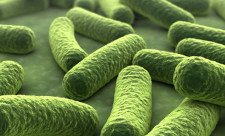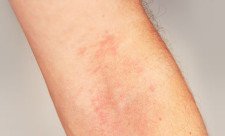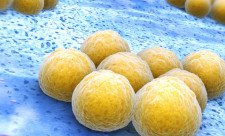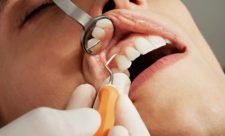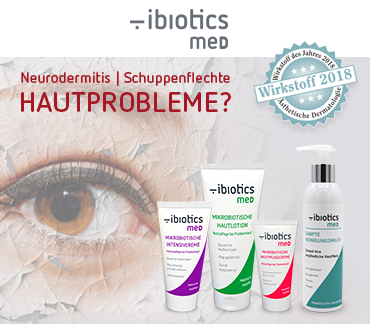
More than five million people in Germany have atopic dermatitis, and prevalence has been rising for years. In particular children are affected. Scientists are constantly investigating the causes of this skin disease, and how those who suffer from it may be provided relief or receive treatment. Recent research has primarily focused on two issues: What is the role of the microbiome – the diversity of all bacteria in and on our bodies – in atopic dermatitis, and which interactions with other body systems exist?
One of the findings of an international team of researchers lead by Stanford University (US) and the French research institute INSERM was that atopic dermatitis may result in chronic inflammation of the skin if it occurred simultaneously with an allergy to house dust mites. Evidently, the underlying mechanism is that house dust mite allergens activate receptors which pass on pain or itching signals to the nervous system. The nerve cells then release what is referred to as substance P, which drives the allergic reaction to the house dust mite allergens using various neurotransmitters.
For those affected, this interaction between nerve cells and somatic cells results in even greater itching sensations and scratching behaviour. The consequence are inflammatory eczemas which in turn increase atopic dermatitis.
Here, the Staphylococcus aureus pathogen plays a key role. While almost all atopic dermatitis patients have this pathogen on their skin, this applies to only five to 30 percent of those not suffering from the skin disease. Scientists have found that the diversity of both the body’s microbial colonisation and the skin’s microbiome has been decreasing for years – apparently a result of our modern lifestyles. The microbiome, however, provides a protective layer for the skin – a barrier which repulses pathogens such as S. aureus.
Experiments with mice have shown discrepancies in the microbiota on the skin of wild and laboratory-reared mice. “These differences suggest that development of some bacteria depends on the environment, in order to handle specific tasks within the microbiome”, writes Volker Blasek, a medical journalist. It would hence be advisable to not only treat the symptoms of atopic eczema and other skin diseases, but also use biomedical and microbiotic approaches to specifically strengthen the microbiome, increasing skin health.
Sources:
https://www.derstandard.de/story/2000109592108/neurodermitis-wie-nerven-mit-immunzellen-interagieren
Dieser Post ist auch verfügbar auf: German

 4. Aug 2020
4. Aug 2020 Popular
Popular Recent
Recent Comments
Comments


